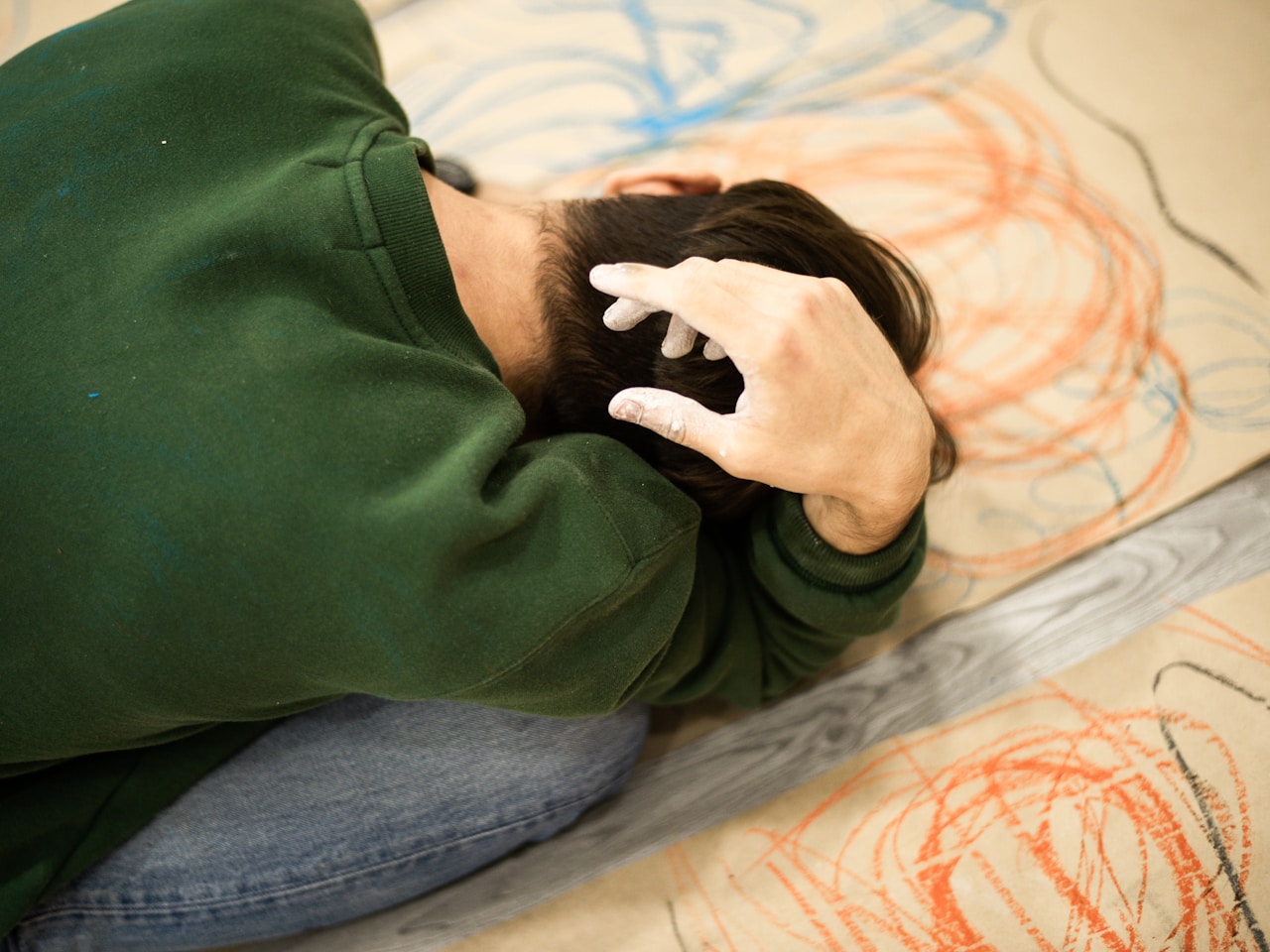Frequencies
Brain Waves (Neural Oscilation)
The Role of Frequencies in Music and Acoustics
Frequency is a fundamental concept in both music and acoustics. It refers to the number of vibrations or cycles per second of a sound wave. In simpler terms, frequency determines the pitch of a sound.
In Music:
- Pitch: Higher frequencies correspond to higher pitches, while lower frequencies produce lower pitches. This is the basis for musical scales and intervals.
- Timbre: The unique quality or “color” of a sound is also influenced by the presence and intensity of different frequencies, including overtones.
- Harmony: The relationship between frequencies is crucial for harmony. Harmonious sounds are those whose frequencies are related by simple ratios, such as 2:1 (an octave) or 3:2 (a perfect fifth).
In Acoustics:
- Sound Perception: Humans can perceive frequencies within a certain range, typically from around 20 Hz to 20,000 Hz. This range is known as the audible frequency range.
- Sound Propagation: The speed of sound propagation depends on the frequency and the medium through which it travels. For example, higher frequencies travel slightly faster through air than lower frequencies.
- Acoustic Design: Understanding frequency response is essential in acoustic design, such as in concert halls, recording studios, and noise control.
To summarize:
- Pitch: Frequencies determine the pitch of a sound.
- Timbre: Frequencies contribute to the unique quality of a sound.
- Harmony: Relationships between frequencies are important for harmonious sounds.
- Acoustic Design: Understanding frequency response is crucial in various acoustic applications.
Frequencies play a fundamental role in music therapy. They influence the emotional response, relaxation, and overall well-being of the listener. Here’s a breakdown of their key functions:
- Emotional Response: Different frequencies can evoke specific emotional responses. For example, lower frequencies are often associated with feelings of calm and relaxation, while higher frequencies can be more stimulating or energizing.
- Relaxation and Stress Reduction: Certain frequency patterns, often involving harmonic overtones, can induce a state of relaxation and reduce stress. This is why music therapy is often used to manage anxiety and promote well-being.
- Brainwave Synchronization: Some music therapy techniques aim to synchronize brainwaves with specific frequencies, potentially promoting relaxation, focus, or creativity.
- Healing and Balance: The concept of vibrational medicine suggests that sound can influence the body’s energy fields and promote healing. Frequencies play a crucial role in this process.
- Chakra Balancing: In some practices, specific frequencies and overtones are associated with different energy centers (chakras) in the body, and music therapy is used to balance these centers.
In conclusion, frequencies are a fundamental aspect of music therapy, influencing emotional responses, relaxation, and overall well-being. By understanding the effects of different frequencies, music therapists can tailor their interventions to address specific needs and promote healing.
Emotional Response to Frequencies in Music Therapy
Frequencies play a significant role in shaping the emotional response to music. Different frequencies can evoke various emotions, ranging from calm and relaxation to excitement and energy.
The Influence of Frequency:
- Low Frequencies: Often associated with feelings of calm, relaxation, and introspection. They can be used to reduce stress and anxiety.
- Mid-Frequencies: Can evoke a range of emotions, from contentment and nostalgia to contemplation and focus.
- High Frequencies: Often associated with feelings of excitement, energy, and alertness. They can be used to stimulate creativity and improve concentration.
Research and Studies:
While the exact mechanisms behind the emotional response to frequencies are still being studied, several research findings support the connection:
- Neurological Studies: Brain imaging studies have shown that different frequencies can activate distinct regions of the brain associated with emotion and mood.
- Cultural and Personal Factors: Cultural and personal experiences can influence how individuals respond to specific frequencies. For example, certain frequencies may evoke nostalgic feelings or cultural associations.
Sources of Information:
- Music Therapy Association: https://www.musictherapy.org/
- Journal of Music Therapy: [invalid URL removed]
- Music Psychology Today: [invalid URL removed]
It’s important to note that the emotional response to frequencies is influenced by a variety of factors, including the context, cultural background, and personal experiences of the listener.
Relaxation and Stress Reduction Through Frequency in Music Therapy
Frequencies play a significant role in inducing relaxation and reducing stress in music therapy. Certain frequency ranges have been found to be particularly effective in promoting these states.
Low Frequencies:
- Delta Waves: These are the slowest brainwaves, associated with deep sleep and meditation. Frequencies around 1-4 Hz can help induce a deep state of relaxation.
- Theta Waves: Associated with creativity, intuition, and deep relaxation, theta waves are typically in the range of 4-8 Hz. Frequencies within this range can promote relaxation and stress reduction.
Mid-Frequencies:
- Alpha Waves: Often associated with relaxation, creativity, and a calm state of mind, alpha waves are typically in the range of 8-12 Hz. These frequencies can be effective in promoting relaxation and reducing anxiety.
Research and Studies:
Several studies have investigated the effects of specific frequencies on relaxation and stress reduction:
- Brainwave Synchronization Studies: Research has shown that listening to music with frequencies that match alpha or theta waves can induce a relaxed state and reduce stress.
- Heart Rate Variability Studies: Some studies have found that listening to music with specific frequencies can reduce heart rate variability, a physiological marker of stress.
Sources of Information:
- Music Therapy Association: https://www.musictherapy.org/
- Journal of Music Therapy: [invalid URL removed]
- Brainwave Entertainment: https://www.brainwaveentrainmentstore.net/
It’s important to note that individual responses to frequencies can vary. While specific frequencies may be generally effective for relaxation and stress reduction, factors such as personal preferences and cultural background can also influence the experience.
Brainwave Synchronization and Music Therapy
Brainwave synchronization is a technique that involves using sound or other stimuli to influence the electrical activity of the brain. This is achieved by matching the frequency of the external stimulus with the desired brainwave frequency.
Types of Brainwaves:
- Delta Waves: Associated with deep sleep and meditation.
- Theta Waves: Linked to creativity, intuition, and deep relaxation.
- Alpha Waves: Connected to relaxation, creativity, and a calm state of mind.
- Beta Waves: Associated with alertness, concentration, and problem-solving.
- Gamma Waves: Linked to higher cognitive functions, such as consciousness and perception.
How Brainwave Synchronization Works in Music Therapy:
- Frequency Selection: Music therapists can choose specific frequencies within a piece of music to target particular brainwave states. For example, to induce relaxation, they might select frequencies associated with alpha or theta waves.
- Listening Experience: The listener is encouraged to focus on the music and allow the frequencies to influence their brainwaves.
- Benefits: Potential benefits include reduced stress, improved mood, enhanced creativity, and better sleep.
Sources of Information:
- Music Therapy Association: https://www.musictherapy.org/
- Brainwave Entertainment: https://www.brainwaveentrainmentstore.net/
- Neurofeedback Society: https://isnr.org/
It’s important to note that while brainwave synchronization is a promising technique, more research is needed to fully understand its effectiveness and long-term benefits.
Jew Harp
The Jew’s harp, also known as a mouth harp, is a small, plucked musical instrument that is played by placing it between the teeth and plucking the metal tongue with the finger. It produces a buzzing sound that can be altered by adjusting the shape of the mouth.
Here are some key facts about the Jew’s harp:
- Origin: The exact origin of the Jew’s harp is unknown, but it is believed to have been invented in Asia thousands of years ago.
- Popularity: It is a popular instrument in many cultures around the world, including Europe, Africa, and the Americas.
- Construction: The Jew’s harp is typically made of metal, often brass or steel. It consists of a small frame with a metal tongue attached to it.
- Playing Technique: To play a Jew’s harp, the player places it between their teeth and plucks the tongue with their finger. The shape of the mouth can be adjusted to change the pitch of the sound.
- Musical Styles: The Jew’s harp is used in a variety of musical styles, including folk music, jazz, and contemporary music.
I hope this information is helpful! Let me know if you have any other questions.
The Jew’s Harp and its Connection to Music and Sound Therapy
The Jew’s harp, a small, plucked instrument, can be used in music and sound therapy due to its unique sound characteristics and potential therapeutic benefits.
Here’s how it’s connected:
- Frequency Range: The Jew’s harp can produce a wide range of frequencies, from low to high pitches. This versatility allows it to be used in various therapeutic applications.
- Harmonics and Overtones: The instrument produces a complex sound with multiple harmonics and overtones. These additional frequencies can contribute to the therapeutic effects.
- Relaxation and Stress Reduction: The gentle, buzzing sound of the Jew’s harp can be soothing and calming, promoting relaxation and reducing stress.
- Emotional Balance: The instrument’s sound can evoke different emotional responses, potentially helping individuals to regulate their emotions and find balance.
- Brainwave Synchronization: Some believe that the frequencies produced by the Jew’s harp can synchronize with brainwaves, promoting relaxation and focus.
In essence, the Jew’s harp’s versatility, harmonic qualities, and potential to evoke emotional responses make it a suitable instrument for music and sound therapy. It can be used in individual sessions or group settings to promote relaxation, stress reduction, and emotional well-being.
Tutorial Jew Harp
There is a short video tutorial how to use a jew harp for for therapeutic purposes. The frequencies from this instrument have easy access to the brain. This instrument is effective. You can try it on your own.
Comprehensive Mental Health Services
Expert therapists providing personalized mental health services for individuals, couples, and groups. Tailored treatment plans for mental wellness.

Lasting Mental Wellbeing Therapy
Safe, confidential therapy sessions for personal growth and coping strategies.

Transformative Group Therapy Sessions
Connect with others facing similar challenges in supportive group therapy sessions.

Transforming Relationships Through Couples Therapy
Strengthen your relationship with couples therapy. Expert guidance for deeper connection.
